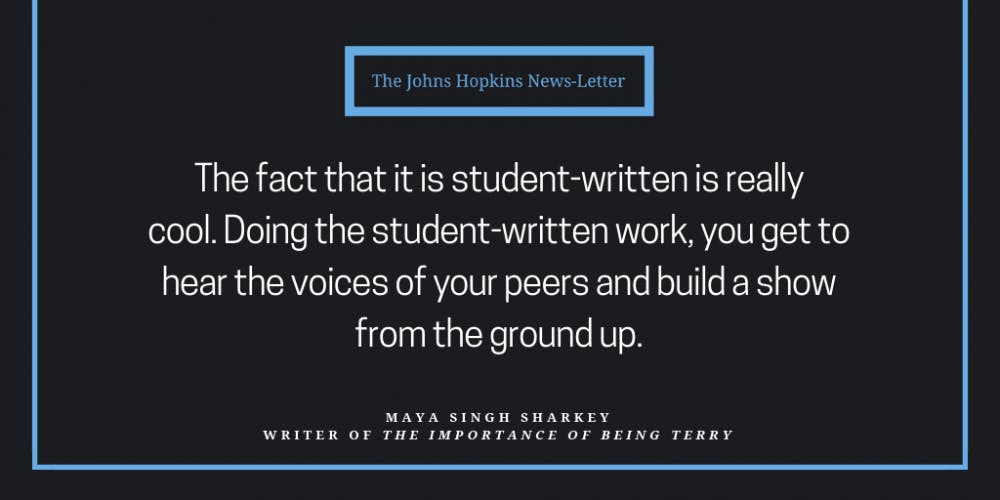I got the chance to interview some of the writers and directors involved in the Witness Theater’s 2019 Intersession Showcase on Saturday, February 16. Every semester, the Witness Theater performs four plays, each written and directed by students, that gravitate around a central theme, idea or location. This year, the central location of every play was an art gallery. Even within those limits, the plays — The Importance of Being Terry, Art Isn’t Dead, Montana and Framed — all had styles that differed starkly from one another, ranging from comedy to drama and each expressing the unique voices of the directors and writers who worked on them.
For instance, the third play, Montana, written and directed by Michael Feder, is about a Hollywood actress who draws in an aspiring actor for an impromptu performance art exhibition in a no-name town in Montana. Meanwhile, her agent tries to get her out of it, all while unraveling the true status of their friendship. Unlike the other shows in the program, Montana is largely dramatic and mainly revolves around the argument between the agent and the actress. Nonetheless, it also contains some of the elements that recur throughout each play, such as a rotating gallery of artworks and paintings adorning the walls of the set. The play also utilizes the art gallery as a space that allows characters to reflect on themselves.
In The Importance of Being Terry, a young artist exhibiting her work at her first major art exhibition begins to have doubts about the quality and validity of her art, all while interacting with her supportive father Mark (junior Frank Guerriero), step-father Terry (junior Fionn Connolly), and her vindictive birth mother Terri (senior Daria Ramos-Izquierdo). One reason that senior Sarina Redzinski wanted to direct The Importance of Being Terry was because she liked its main character Dahlia, played by junior Claire Beaver.
“I really connected with the main character,” Redzinski said. “I thought...she’s a female queer artist, she’s into 90s female punk music and is very nervous about how the world is going to receive her work...that feeling of being a female artist, whether you feel like you’ve earned that title or not, is definitely a strong thematic point.”
Redzinski later explained that reconciling the core drama of this play with its farcical style was a challenge. Many of the play’s jokes revolve around the confusion between the two Terrys as well as the somewhat absurd, elitist nature of art exhibitions.
“I am so glad that I got to write NPR jokes,” explained junior Maya Singh Sharkey, the show’s writer.
Sharkey discussed some of the challenges of writing a comedy for such a short time frame.
“The interesting thing about a one-act play is you have to build the world, build the circumstances, and resolve those circumstances in twenty minutes and it’s so easy to write a two hour play...but sometimes you have to kill your darlings. And then balancing the tone because it is based in family, but it’s also a joke fest.”
It’s also a balance that Framed tries to strike, though with more of an emphasis on comedy. Written by freshman Gabriel Feuerstein-Mendik and senior Charlie Linton, and directed by freshman Brian Gabriele, the play follows two competing groups of art thieves who attempt to steal the same painting — or rather determine who deserves to steal it. When I asked Feuerstein-Mendik, who had never written a play before, about the challenges he faced during the creative process, he explained how his previous experience had helped him.
“Working with really weird dialogue and trying to make it feel right, it felt like it was a lot easier to write words that made more sense, or at least, once you wrote words that were shitty, figuring out how to make them sound more natural,” he said.
Despite Feuerstein-Mendik’s somewhat self-deprecating assessment of his work, the play is hilarious. His co-writer Linton seemed to share this opinion. “I remember we were writing the beginning,” Feuerstein-Mendik explained. “I just kept having these terrible, terrible ideas, and I would say to Charlie, ‘What if he said this?’... he’d be like, write it down.”
Comedy and drama also mix in the second play, Art Isn’t Dead, written by freshman Bridget O’Leary. In the play, a group of immortals (freshman Hannah Bruckheim and juniors Enrique Oliva and Fionn Connolly) — one of whom is immortalized in one of the gallery’s paintings — talk about their past lives and give advice to a woman (senior Skylar Freyman) and her delusional partner (sophomore Owen Campbell).
Senior Brice Messenger, the show’s director, talked about the unique challenges and advantages of the show’s format. “For the Intersession show we use one set, which is a very unique challenge because there’s not a whole lot that you can change between shows. It’s really fun to work with because there’s always elements that occur in other shows that you may be able to use in your own.”
An example of these connections, he told me, was that the security guard (sophomore Chloe Otterson) in Art Isn’t Dead was the same security guard in Framed. “I think that’s a very fun little nod to kind of everything existing on the same set, potentially in the same universe, you never know.”
Indeed, while all the plays are different, they each exhibit a deft blend of comedy and drama that feels unique to this type of production and perhaps to this group of writers and directors.
“The fact that it is student-written is really cool,” Singh Sharkey explained. “Doing the student-written work, you get to hear the voices of your peers and build a show from the ground up.”
Arts & Entertainment Editor Claire Beaver was in the showcase. She was not involved in writing or editing this article.





